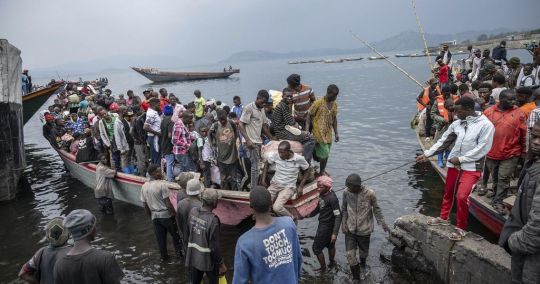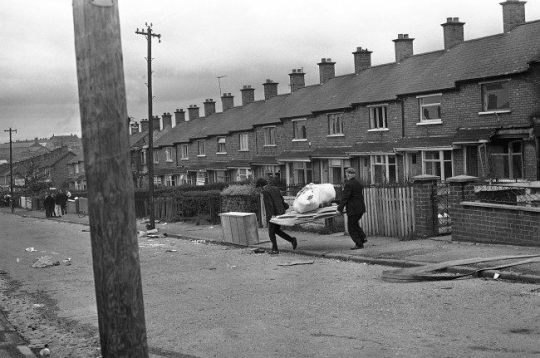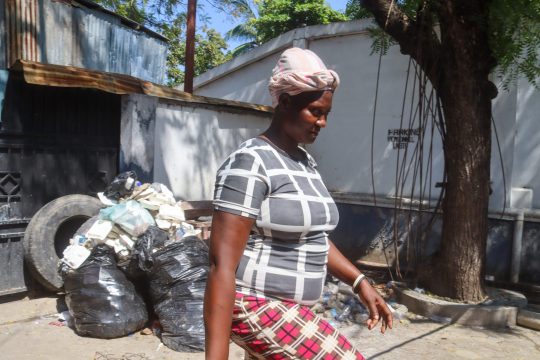#internal displacement
Explore tagged Tumblr posts
Text
Donate to Help IDPs
Shared and hosted by tigrayupdate:
“Seeing our people suffering for so long brings tears. We should all contribute whatever little as we celebrate the New Year with hope of the repatriation to their homes.
Since the onset of the Genocidal War in Tigray in November 2020, over 2 million people have been displaced or ethnically cleansed due to the violence. Although some have managed to return to their homes after enduring harsh conditions in IDP camps, hundreds of thousands are still stuck in these camps, unable to go back due to the Governments' failure to implement the Pretoria Agreement.
Nearly four years have passed since our people were forced from their homes, which remain occupied by #Amhara and #Eritrean forces. Let's support those still suffering and work towards a brighter future for them.”
$825 AUD raised of $5,000 goal
#aid#tigray#free tigray#tigray genocide#internal displacement#internally displaced people#ethiopia#eritrea#amhara#donations#donate#gofundme#2024#labutansa
143 notes
·
View notes
Text

Hundreds of thousands of residents flee as fighting between M23 rebels and DR Congo forces nears Goma.
3 notes
·
View notes
Text

Protestants fleeing Ardoyne on August 10, 1971, during The Troubles.
#Ardoyne#Belfast#Northern Ireland#70s#The Troubles#photography#black and white#internal displacement#historical
2 notes
·
View notes
Text
A year of war in Gaza
0 notes
Text
Global Surge in Internally Displaced People Reaches Record High
The number of internally displaced people (IDPs) worldwide has doubled in the past decade, reaching an unprecedented 76 million. Special Advisor on Solutions to Internal Displacement, Robert Piper, highlighted this alarming trend citing conflicts, natural disasters, and weather-related events as primary causes. Rise in Internal Displacement Mr. Piper reported that these 76 million IDPs have…

View On WordPress
0 notes
Text
Global Surge in Internally Displaced People Reaches Record High
The number of internally displaced people (IDPs) worldwide has doubled in the past decade, reaching an unprecedented 76 million. Special Advisor on Solutions to Internal Displacement, Robert Piper, highlighted this alarming trend citing conflicts, natural disasters, and weather-related events as primary causes. Rise in Internal Displacement Mr. Piper reported that these 76 million IDPs have…

View On WordPress
0 notes
Text
i think langdon is probably bisexual but would never call himself that. it’s not that he would be ashamed of it (at least not when he’s a grown man, his college self… perhaps) but he just doesn’t consider the attraction he has to men to be like… real? it’s just a reaction to something else in his life. him having sex with DL frat guys was just him “fucking around” and the weird “i want you to be my dad but i also want you to fuck me but i also want to be your best friend” feelings he has for robby are just because he’s lonely and fucked in the head a little bit from his dad
#the pitt#frank langdon#i think frank displaces responsibility a lot#or like… assigns root causes to things when that’s not the actual case#his addiction is because he’s treating withdrawal symptoms#not because his job stresses him out and he’s lonely and he kinda hates himself#his day is going bad because this new intern is a bitch. not that he’s being an asshole#yknow what i mean?
63 notes
·
View notes
Text
#amnesty international#refugees#palestinian refugees#occupied palestine#displaced persons#israel hamas war#israel#us president donald trump#human rights#live-streamed genocide#gaza
74 notes
·
View notes
Text
Every March 8, they remember that we women exist, but what we really need is security,” said Mirlande Lebrun, a mother of four who fled Delmas 30 during the latest escalating gang violence. “We live in this camp with no assurance that we won’t have to run again if gangs attack.”

Three women share a small space inside the Ministry of Public Works, Transport, and Communication camp in Delmas 33, where they cook, do laundry and sleep with their children on March 8, 2025. Photo by Dieugo André for The Haitian Times
Overview:
On International Women’s Rights Day, thousands of displaced Haitian women living in makeshift camps denounced their dire living conditions and urged the government to restore security so they could return home. Many have fled repeated gang attacks in neighborhoods such as Delmas 30, Carrefour, Carrefour-Feuilles, Cité-Soleil, Solino, Bélair, Fort-National and Gressier, finding temporary shelter in public buildings like schools and the Ministry of Public Works, Transport, and Communications (MTPTC).
PORT-AU-PRINCE — Sitting at the entrance of a cramped makeshift shelter, 21-year-old Evaïna Pierre tries to soothe her crying child while her other child sleeps. Once a resident of Solino, then a refugee in Delmas 30’s Acra Factory Outlet camp, she has now taken shelter inside the Ministry of Public Works, Transport, and Communications (MTPTC) building. Her only wish on March 8, International Women’s Rights Day? To return home.
“I just want security,” she said during an interview with The Haitian Times. “If I could go back to my neighborhood, I would be so happy. Here, we don’t live well. Water leaks into our tent when it rains, and we can’t sleep.”
Pierre is one of thousands of internally displaced women in Haiti, where 55% of the country’s 1,041,229 displaced persons are women and girls, according to the International Organization for Migration (IOM).
Many have lost their homes, businesses and even family members to gang violence. Now living in overcrowded, unsanitary conditions, they say the government’s failure to restore security has left them in limbo, vulnerable to hunger, disease and gender-based violence.

Evaïna Pierre, a 21-year-old mother, sits at the entrance of her shelter, which measures barely one square meter, at the Ministry of Public Works, Transport, and Communication on March 8, 2025. Photo by Dieugo André for The Haitian Times
A refugee camp with no relief for displaced women
In displacement camps across Port-au-Prince, including at the MTPTC in Delmas 33, women endure dangerous, unsanitary conditions.
No privacy: Women and children shower in the open, often in the same space as men.
Lack of sanitation: Residents must pay 10 gourdes or about 76 cents just to use the toilet.
Health risks: Piles of garbage spread disease, while stagnant water creates a breeding ground for mosquitoes.
Threat of violence: Women are at risk of harassment and sexual assault in the camps, where security is minimal.

A displaced woman walks past a foul-smelling pile of garbage that spreads throughout the camp, situated on the grounds of the Ministry of Public Works, Transport, and Communication in Delmas 33, on March 8, 2025. Photo by Dieugo André for The Haitian Times
“Every March 8, they remember that we women exist, but what we really need is security,” said Mirlande Lebrun, a mother of four who fled Delmas 30 during the latest escalating gang violence. “We live in this camp with no assurance that we won’t have to run again if gangs attack.”
For many women like Pierre, this is not the first time they have had to flee.
“Between running away at two times, I lost everything. Even my birth certificate is gone,” Pierre said, cradling her baby boy, who seemed to be disturbing her as he kept crying. “Before, I sold cosmetics, but now I have nothing.”
“We ask for nothing but security,” Haitian women insist
Forty-eight-year-old Bethie Joseph shares a tiny, makeshift space with her son in the parking lot of the MTPTC building. Once financially independent, she now depends on charity to survive.
“We don’t live well here. Even sleeping is difficult, but we have no choice,” Joseph said. “If the government had taken responsibility for our security, we would not be running from place to place like this.”
Like many displaced women, she no longer trusts government promises and feels abandoned.
“We are not asking for anything but security—so we can go back to our homes.”
International Women’s Rights Day overshadowed by crisis
Haiti observed International Women’s Rights Day 2025 under the UN theme “Rights, Empowerment, and Opportunities for Every Displaced Woman and Girl, Everywhere in the World.”
However, for displaced women and girls in Port-au-Prince, March 8 was just another day of survival.
“Women’s Rights Day is a time for reflection, but more importantly, action,” the IOM said in a statement. “Displaced and migrant women need urgent support and protection to rebuild their lives.”
The United Nations and humanitarian groups emphasize that displaced women must be included in discussions on Haiti’s future. Solutions must address:
Economic empowerment programs to help women regain financial independence.
Access to education for displaced children.
Social protection systems to ensure the dignity and security of women.

The entrance to the new displacement camp for individuals fleeing violence is located on the premises of the Ministry of Public Works, Transport, and Communication in Delmas 33, as of March 8, 2025. Photo by Dieugo André for The Haitian Times
But for women like Saloude Ciméus, 44, those solutions feel out of reach.
“I have fled Canaan, Delmas 3, and the Acra camp, and now I’m here,” Ciméus said, standing in front of her small shelter at the MTPTC site. “I don’t know where else to go.”
She tries to survive by selling bottled water, but sales are slow.

Haitian women demand action
The entrance to the new displacement camp for individuals fleeing violence is located on the premises of the Ministry of Public Works, Transport, and Communication in Delmas 33, as of March 8, 2025. Photo by Dieugo André for The Haitian Times Haitian women demand action As women’s organizations gathered for panel discussions and events, displaced women felt forgotten, waiting for action instead of speeches.
Their message to the Haitian government?
Restore security, open the roads, and let us go home.
“Let the government give us security,” Ciméus said. “We don’t need aid. We just want to go home.”
#Haiti#International Women’s Rights Day#seeking shelter inside the Ministry of Public Works Transport and Communications (MTPTC) building#International Organization for Migration (IOM)#55% of the country’s 1041229 displaced persons in Haiti are women and girls
46 notes
·
View notes
Text

82 notes
·
View notes
Text

#eyes on sudan#sudan famine#sudan war#sudan genocide#sudan#free sudan#keep eyes on sudan#sudan crisis#internally displaced people#egypt#libya
20 notes
·
View notes
Text
''you'll stay?" not forever. maybe not for very long at all. for now though, he will.
melting into a big sad puddle what
(fic excerpt from tiptoes - thirdgleam on ao3 & thedayforgives on tumblr, recommend!)
#fic: tiptoes#the idea of forever is so interesting in fiction#bc obviously its hyperbole#not forever but as long as i can- as long as you'll let me#oo fic spoilers from here bewarned!!!!!!#tim is obviously estranged and displaced from his OG timeline#it's interesting to see him adjust#in every other way but his internal monologue#is still incredibly uncertain/in that old 'i'll get out of here one day'#despite the life that he's built for himself#the tragedy that tim Can't and won't guarantee forever but he can guarantee the present#bc a. line of work b. dimension displacement#he's coping terribly <333 its okay we love him anyway#one of my fave batfam pics so recommend y'all#batfam#batfamily#tim drake
22 notes
·
View notes
Text
Sudan’s struggle is obscured by political upheavals, displacements, and hunger after the fall of President Omar al-Bashir and the 2021 coup, but why has the world turned a blind eye to the ‘forgotten war’?
#sudan crisis#forgotten war#political upheaval#displacement#hunger#omar al bashir#sudan 2021 coup#international neglect#humanitarian crisis#global awareness#conflict zone#world responsibility#peacebuilding#crisis ignored#media focus#human rights#sudanese people#global indifference#awareness gap#urgent action
192 notes
·
View notes
Text



in your heart shall burn
#celi is having a very miserable time but looking very pretty <3#i have a lot of thoughts rotating about how she’s dealing with the herald -> inquisitor thing#and how it affects things for them as a dalish clan’s first#which is to say uncomfy and NOT enthused about the position of power but concerned. so dealing with it.#also very funny for celi to meet thea and immediately go *this* is who varric goes on about? by her attitude#until thea softly mentions not wanting to drag merrill away from helping the displaced elves and celi is internally like. ah. i get it.#dani plays dragon age#game: dragon age#oc: celi lavellan
20 notes
·
View notes
Text
by Joel Margolis
Israel’s military operations in the Gaza Strip comply with international humanitarian law in part by guiding civilians away from the urban battlefields that arise ad hoc during the war. Yet astonishingly, some observers have mischaracterized these public safety protocols as violations of law.
Human Rights Watch has called Israel’s relocations of civilians in Gaza “displacements” that amount to the odious crime of “ethnic cleansing,” a displacement to make a community ethnically homogeneous.
Sens. Bernie Sanders (I-Vt.) and Chris Van Hollen (D-Md.) have echoed the false ethnic-cleansing charge, as have certain other self-described congressional progressives. But under international humanitarian law, the removals are valid “evacuations,” not displacements, a difference with enormous legal and moral significance.
The international humanitarian law’s rule of evacuation requires—to the extent feasible for civilian safety—that an army evacuate civilians temporarily from the vicinity of a military operation before attacking area combatants. For example, an evacuation order may relocate civilians from a neighborhood targeted for a bombing raid on an enemy rocket-firing position. By contrast, the rule of displacement prohibits the permanent removal of civilians from an entire occupied territory or country unless required for the security of the civilians involved or for imperative military reasons.
Evacuation orders issued by the Israeli Defense Forces in Gaza have consistently followed the rule of evacuation. Virtually every order has repositioned civilians from a military sector to a safer area before an IDF military mission; no order has moved civilians permanently or pushed them outside of Gaza. Moreover, the IDF has enhanced civilian safety by preparing evacuation routes, establishing humanitarian zones for the evacuees, communicating escape routes through multiple modes of communication and providing reasonable prior notice of the plans. These actions have mitigated the unfortunate, but inevitable difficulties faced by families that must temporarily leave their homes.
The success of IDF evacuations is especially impressive considering the machinations of Hamas to frustrate these protective measures. Hamas embeds military personnel and ordinance in homes, schools, hospitals and mosques, and then blocks the residents of those neighborhoods from obeying evacuation orders. The militants attack IDF soldiers who prepare humanitarian zones for temporary habitation. And the terrorists steal truckloads of humanitarian aid meant for evacuees. Those cruel acts are egregious abuses of the human shield rule as outlined under international humanitarian law.
Evacuations of Gazans from combat areas happen even when the practice hampers the IDF’s military progress by sacrificing the element of surprise. Hamas terrorists who flee the site of an imminent IDF strike can and do blend into the evacuating population and launch attacks from the designated humanitarian zone. That terror tactic illegally creates a new batch of human shields and often compels additional evacuations. It has forced many of Gaza’s residents to uproot themselves multiple times.
Top military experts have lauded Israel for the professionalism of its evacuations. One such assessment was delivered by the renowned authority, John Spencer, chair of Urban Warfare Studies at Modern Warfare Institute at the U.S. Military Academy a West Point. Similar praise was extended by other military experts as well.
Different military commanders may disagree about the best way to evacuate civilians during the chaos and peril of war. An evacuation can be extremely arduous, especially when the action must be repeated due to enemy interference. But even a burdensome or repeated evacuation is evidence of proper compliance with international humanitarian law, not a sign of displacement or any other wrongdoing.
11 notes
·
View notes